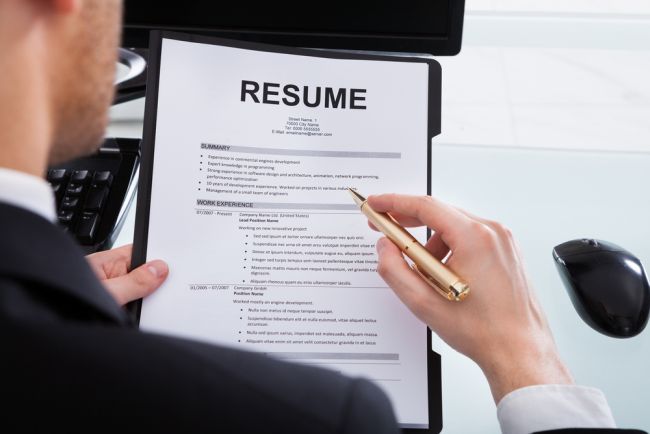Summary: California is weighing the pros and cons of forcing law students to complete 50 hours of free or reduced cost legal work within one year of being licensed to practice law.
The state bar of California is toying with the idea of having all law students in the state complete 50 hours of legal work for either no cost or for reduced rates within a year of being licensed to practice law, according to the LA Times. Bloomberg adds that California would also have a 250-hour practical skills training requirement, as well as a 10-hour continuing legal education requirement.
Those behind the proposal feel that it will create better-prepared attorneys who will assist California residents who are in need of legal assistance, but cannot afford to pay an attorney.
Since the economy crashed in 2007, funding for impoverished families and individuals dwindled, just as these people needed help with fighting foreclosures, evictions, and other major legal issues. Legal aid groups were forced to become more selective with their clients. According to the state bar, it is estimated that 1 million California residents are declined by legal aid services every year.
The University of Minnesota Law School created a clinic for immigrants.
Supporters of the new 50-hour requirement are hopeful that it will help new attorneys obtain experience that will make them better attorneys, as well as appreciate the significance of helping low-income residents with legal problems.
Carlis Pegues, a 64-year-old Californian from South Los Angeles, has been taking the bus every Wednesday to attend a free legal clinic in the skid row area of Los Angeles. Both attorneys and law student volunteers offer legal advice during this time at no cost. Pegues said, “It’s a traumatic, mind-boggling experience trying to get out of this situation when everything is closing in on me. If I have a problem, they don’t look down on me here. They just step up and help.”
New York recently adopted a similar measure, and many predict that other states will soon create and enforce these proposals as well.
John Marshall Law School opened a more spacious clinic for veterans.
However, some are concerned that organizations do not have adequate resources to provide work to freshly minted attorneys if the proposal is approved. There may be a shortage of attorneys available who can help the law students, who are unable to appear in court or provide legal advice without the guidance and supervision of a licensed attorney. Other organizations have said that they do not have the staff available to train and supervise a large group of students. In addition, many organizations do not have the space for these students to work.
Kirsten Kreymann, the pro bono director at the Public Law Center in Santa Ana, said, “The need is endless. We want to provide as much high-level legal service for our community as we possibly can — but we need the money to do it.”
In civil cases, there is no constitutional right to an attorney, unlike in criminal cases. Therefore, some citizens are forced to represent themselves in cases such as evictions, guardianships, and restraining orders.
The Legal Aid Foundation of Los Angeles is one of the largest in the state. It is only able to accept around 10% of law students who apply to become volunteers because it cannot accommodate more.
Phong Wong, the director of the foundation, said, “The need is definitely there. We turn away so many low-income clients because we don’t have the support, the resources to help them. At the same time, there are all these law students who can be put to use. We just need to figure out how to make it work for the clients that we serve.”
A major source of income for legal aid organizations in California comes from the interest earned on attorney trust accounts. This money is held temporarily in the account on behalf of clients. However, when interest rates dropped, the money in these accounts did as well—by nearly 80 percent. Other sources of funding, such as government grants and private donations, declined as well.
Many organizations saved money by letting go of staff members and implementing furloughs. Caseloads were reduced even though demand was growing. Salena Copeland, the executive director of Legal Aid Assn. of California, said, “There has always been a justice gap, and it’s not getting any better.”
The University of Buffalo Law School also opened a legal clinic for veterans.
In 2012, the state bar created a task force to determine different ways to prepare lawyers for transition into the profession. Many were concerned that students needed more hands-on experience in the weakened economy. Many large firms and government agencies are spending less to train new attorneys, and over half of new attorneys work in small firms that do not have the resources to provide a great deal of training.
Providing free legal work would provide new lawyers the experience they need to practice law, while closing a gap in services to the poor, according to the task force. The 50-hour requirement was just one of several recommendations, which are still waiting for approval from the California Supreme Court and the state Legislature.
Laura Dym Cohen, a member of the task force and a professor at Southwestern Law School, said she hopes that law schools, law firms, and legal aid groups will collaborate and perhaps share the expenses for students to complete the work. She said, “I would anticipate that the state bar and all of those who are involved will come together to make this a workable model for all.”
Jonathan Lippman, the chief judge of the New York Court of Appeals, created the requirement in that state. Before receiving a license to practice law, students must complete 50 hours of work. Lippmann acknowledged that he heard some of the same concerns that those in California have. He said, “”When I first put it out there, it made people nervous — the different constituencies, the law schools, the bar, the students. Everyone had some reason to sort of say, ‘Gee, we don’t want to be forced to do this.’” According to the Wall Street Journal, New York’s requirement began this year.
Legal aid groups in New York were nervous that they would not be able to handle the rush of students that wanted to volunteer, but so far, the requirement has been successful.
As for the clinic that Pegues attends in Los Angeles, it has been open for years and is operated by the Los Angeles Community Action Network and the Los Angeles Legal Aid Foundation. Although at first, the focus was on helping those who received tickets for jaywalking, littering, and loitering, it now primarily focuses on housing issues.
Dan Glaser, a second year law student at UCLA, has volunteered about 25 hours in under two years. He implied that a 50-hour requirement would not be much of a burden. Volunteering “…makes all [his] law school reading, problems and assignments seem petty,” he commented.
Glaser does worry about the implementation of the rule and the additional costs that schools and legal aid organizations may endure. Forcing students to volunteer may cause them to resent it. “The students that want to do this type of work have plenty of opportunities to do it. I’m not sure what can be gained by forcing them to do it if they don’t have an interest,” he explained.
Students at the clinic usually spend a half hour or so with each client. Pairs of students debrief each client, analyzing their legal issue and consulting with supervising attorneys as to which legal route to take.
Karl Scott, a staff member of the Los Angeles Community Action Network, said that sometimes the clinic has to close its doors if there are not enough volunteers and attorneys. The clinic runs smoothly when there is a good showing of volunteers, however. “We’ll stay open until the last person leaves,” he said.
Source: LA Times
Photo credit: ukhumanrightsblog.com





































